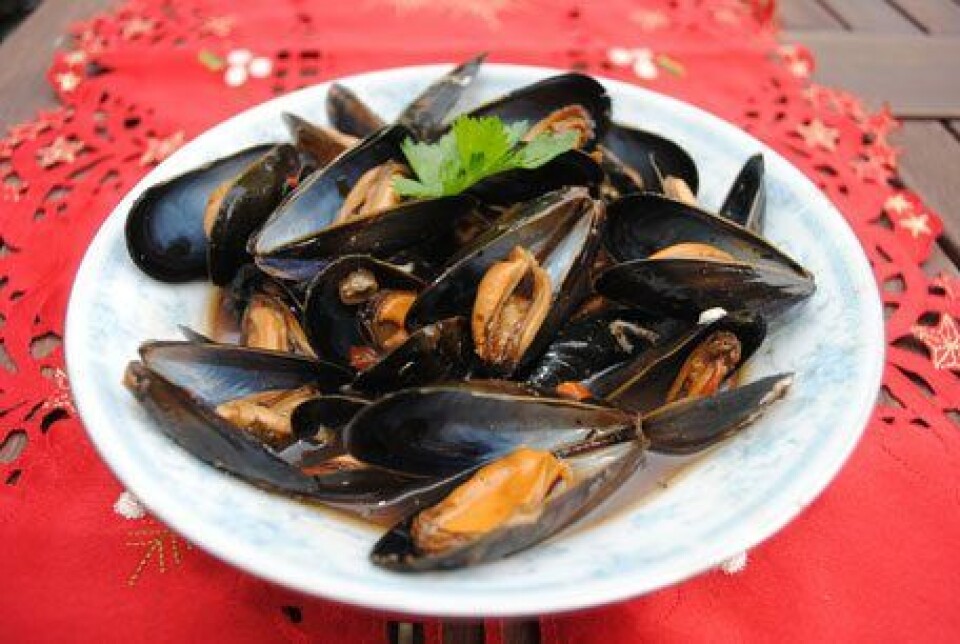
Funding for shellfish hatchery
A £1.9 million, 30-month trial to test the commercial viability of a mussel hatchery in Scotland has been announced by the Scottish Aquaculture Innovation Centre (SAIC) and Highlands and Islands Enterprise.
Other key partners in the project include the Scottish Shellfish Marketing Group, the University of the Highlands and Islands and the Scottish Government.
Shellfish production is a growing industry in Scotland, supporting over 500 jobs across the supply chain, many in rural areas. Mussel production in Scotland reached its highest-ever level in 2014, with Shetland accounting for almost 80% of production.
There is capacity and demand to raise production substantially, if the industry can address issues such as the availability of mussel spat. The establishment of a commercial hatchery to produce spat would help to resolve this issue, providing Scottish producers with a reliable supply of spat (and potentially other juvenile shellfish).
The new project was announced at SAIC’s first annual conference, where the Deputy First Minister of Scotland, John Swinney, was the keynote speaker. He said: “I welcome this announcement of an innovative project to develop Scotland’s first commercial mussel hatchery. This stepping-stone initiative is crucial to our shellfish industry, enhancing the opportunity for significant future growth.”
Project details and partners
There are two main elements to the announced project, which is supported by the Scottish Government, as well as SAIC, HIE, Scottish Shellfish Marketing Group (SSMG), and the NAFC Marine Centre at the University of the Highlands and Islands:
- Establishing a core pilot-scale hatchery at the NAFC Marine Centre UHI in Scalloway, Shetland, and testing the commercial feasibility of spat production.
- A programme of R&D to support the development of new technologies and processes aimed at increasing the yield of farmed mussels in Scotland.
Also involved in the R&D programme are members of the MASTS (Marine Alliance for Science and Technology) academic community. In addition to the NAFC Marine Centre UHI, this includes researchers at the University of Stirling’s Institute of Aquaculture, the Scottish Association for Marine Science (SAMS; also a member of the University of the Highlands and Islands) and Marine Science Scotland, as well as a Scottish research-focused SME, Xelect.
Funding support for the project includes contributions from SSMG, the Scottish Aquaculture Innovation Centre, Xelect and the academic partners, as well as significant investment from Highlands and Islands Enterprise and the Scottish Government.
Heather Jones, CEO of the Scottish Aquaculture Innovation Centre, said: “Developing secure health-certified spat production systems is a Priority Innovation Action for SAIC, and we’re very pleased to drive such an initiative forward and co-fund this stepping stone to a commercial hatchery project. In bringing together academic expertise and industry ambition, this transformative project could deliver measurable economic growth in a key Scottish sector.”
Elaine Jamieson, Head of Food & Drink at Highlands and Islands Enterprise, said: “The shellfish industry clearly has ambition to increase production, and this collaborative research project has the potential to strengthen Scotland’s position in a growing international market. We believe the project will be a catalyst to significantly improving productivity and output. The vast majority of our shellfish producers are located in coastal communities in the north and west of Scotland, so in addition to supporting growth in the food and drink sector, this project will benefit communities and create new jobs in some of our more remote areas.”
Michael Tait, Chairman of SSMG, said: “Having a more reliable source of spat will help shellfish producers in Scotland meet the industry’s shellfish production target of 13,000 tonnes by 2020. In addition, the new technologies and processes permitted by the SAIC-sponsored research could allow our members to generate increased and more reliable yields, and help them target new export markets. This announcement is a milestone for the industry.”
University of the Highlands and Islands Deputy Principal, Dr Crichton Lang, said: “The applied research made possible by this hatchery project will look at aspects the industry considers important to commercial success. As such, the research could make a demonstrable impact on coastal communities and the shellfish industry in Scotland, and we are delighted to be part of this collaboration.”
The announcement of the project follows on from a study tour to New Zealand and Tasmania earlier this year by SSMG, NAFC Marine Centre UHI and the Scottish Aquaculture Innovation Centre. Visits included the Cawthron Institute, SPATNZ hatchery and Spring Bay Seafoods’ commercial hatchery, whose experiences will inform the planning and establishment of the Scottish hatchery.






















































